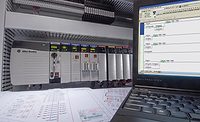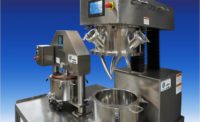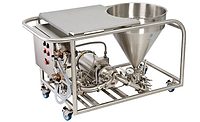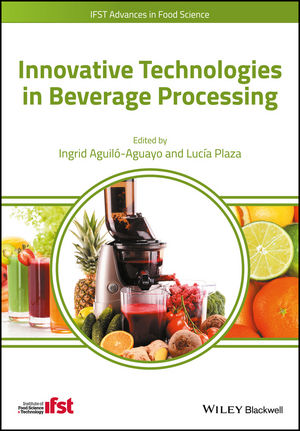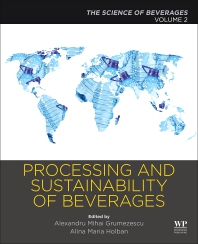Processing automation works at light-speed
Automation streamlines mixing and blending capabilities

Superman might be faster than a speeding bullet, and The Flash might be able to run at near-light-speeds, but superheroes aren’t the only ones with the need for

|
speed. With the number of formulations and ingredients available in the beverage marketplace, beverage-makers are turning to processing automation equipment to efficiently handle their growing SKU bases.
“Processors have to get more product out the door faster and with fewer people and reduced energy,” says Rick Earley, dairy and beverage market manager for Admix Inc., Manchester, N.H.
Katie Godfrey, chair of the International Society of Beverage Technologists’ (ISBT) Beverage Operations and Processing Technical Committee, adds that saving time and energy through beverage processing is the biggest trend in the beverage space that is affecting processing automation equipment.
Complex ingredient formulations as well as increased consumer offerings like different flavors and popular ingredient trends like vitamins and energy also are impacting the mixing and blending operations, says Kevin Henretta, chief engineer for SensiBlend, Wilmette, Ill.
“Both of these trends are pushing manufacturers toward exploring more automated and more controlled processes, which allow for cleaning in place (CIP) and faster product-to-product changeover,” he adds.
To meet these trends, SensiBlend’s systems provide adaptive feedback where ingredient compositions are measured during production and can make adjustments to ingredient proportioning in real-time, Henretta says.
“This ensures in-spec product at the outlet of the system,” he says. “Furthermore, our in-line blending systems can bring in multiple streams of ingredients at varying proportions to create a wide variety of complex beverage formulations depending on how you program [the recipe] via a software interface.”
To keep up with the evolution of the beverage space, offering flexible solutions can be important in order to streamline operations, experts note.
“Flexibility is key,” ISBT’s Godfrey says. “Our industry is changing daily. A system must be flexible in order to meet the demands of tomorrow today.”
Because beverage manufacturers are finding they no longer have the time to make multiple premix batches, an increasing number of companies are requesting in-line powder induction and dispersion technology, Admix’s Earley explains.
“Processors are looking for that true ‘one-size-fits-all’ mixer, and in-line powder induction and dispersion allows processors to make literally any size batch [without being] constrained by a mixer in-tank,” he says.
Admix offers its Fastfeed powder induction and dispersion system that uses a specially designed powder suction pump and high-shear mixing technology for rapid incorporation and wetting out of difficult powders, the company says. Earley notes that the technology addresses speed efficiency as ingredients are mixed in-line into the liquid as it fills the batch tank.
The technology also allows all ingredients to be added from the safety of floor level; cuts batch times in half; eliminates dusting from adding powders into open top tanks; consumes less than half the energy; entrains no air; and eliminates batch inconsistencies due to operator powder addition differences, Earley says.
In order to meet the demands of beverages, technology innovations for processing automation have played a crucial role. SensiBlend’s Henretta says the advancements of in-line sensors that have hit the market within the last couple of decades have been the most significant.
“In order to implement a true in-line, on-demand approach to manufacturing, the systems must have real-time product analysis capabilities,” he says. “Mass flowmeters, in-line spectrophotometers, in-line conductivity sensors, in-line pH sensors, in-line Brix measurement, in-line viscosity meters and many others have allowed the automated approach to succeed.”
Henretta adds that SensiBlend offers mixing and blending systems that actively control an automated in-line, multi-component liquid blending process by using sensors that provide real-time feedback to the proportioning pumps.
ISBT’s Godfrey notes that as the needs and desires of clients change, the technology will need to make advancements to meet those demands.
But advancements in technology and automation aren’t the only ways equipment suppliers are meeting industry needs.
“There has been a big push on the processing side for green, clean-in-place technologies utilized for [the] cleaning of processing equipment,” says David McCarthy, president and chief executive officer of TriCore Inc., Racine, Wis.
McCarthy notes that technologies such as electrochemical activation systems (ECA) that are environmentally friendly can be used in place of traditional chemical cleaning systems.
“[ECA systems are] safe for humans [and] safe for the environment with significantly less chemical water and energy costs and, perhaps most importantly, significantly less cleaning time as compared to traditional chemical-based systems,” he says. “These technologies require integration with existing processing equipment and control systems.”
Looking for a reprint of this article?
From high-res PDFs to custom plaques, order your copy today!



